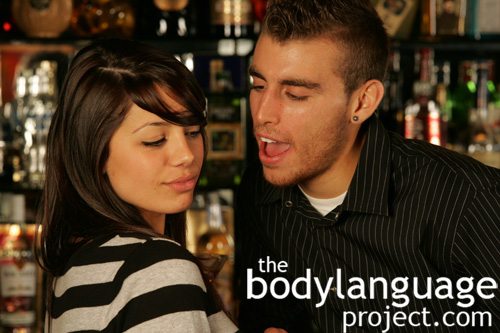Body Language of Self-Slapping
Synonym(s): Slapping The Self, Hand To The Forehead Slap, Forehead Slap.
Description: When the open palm is quickly slapped against the self, usually the forehead or thigh.
In One Sentence: Self-slapping indicates that one is punishing themselves for not recalling something quickly enough (but that they finally have).
How To Use it: Self-slapping is a playful way to point out to others that you feel you should recall important details quicker. Self-slapping is a form of self-punishing as one inflicts a small amount of pain. This tells others that they don’t need to give you any extra grief and that you understand your mistake.
The cue also tells others that you have forgotten something important, and that there may be a crisis that they can help you resolve. Thus, self-slapping can signal the desire for sympathy and assistance.
Context: General.
Verbal Translation: “Oh darn, I really messed that up by not thinking that through, but you don’t need to punish me, I’ll do it myself.”
Variant: See Neck Rubbing (back of neck) or Holding The Back Of The Neck.
Cue In Action: Something didn’t feel right. Mary knew she had forgotten something, but what? She looked around the room and couldn’t put her finger on it. What had she forgotten to do? What was it? Just then, her hand came up and slapped her forehead. She had forgotten to pick up the dry cleaning on her way home from work!
Meaning and/or Motivation: A self slap to the forehead implies that a person realizes they’ve made a mistake and is admonishing themselves for it. Thus, it is a form of self-punishment and meant to indicate to others that they have had a momentary lapse of judgment. It is an attempt to prove to others that they aren’t as stupid as the mistake would indicate and that it won’t happen again.
A slap to the thigh usually indicates that a person has had an important thought or has remembered something that had slipped their mind. In this case, they will slap their thigh with open palm and then proceed to vocalize their recalled thought.
A hand slapping the back of the neck indicates that they feel someone else is being a pain (See Neck Rubbing).
Cue Cluster: The self-slap is usually accompanied by open or surprised facial expressions, eye widening, and eyebrows up. People who self-slap may also take in a breath so as to prepare to speak or leave their mouth open as if exasperated by their mistake.
Body Language Category: Auto contact or self-touching, Automatic gesture, Frustration or frustrated body language, Leaked or involuntary body language, Surprised body language.
Resources:
Arsenio, W. F., Cooperman, S., & Lover, A. Affective Predictors of Preschooler’s Aggression and Peer Acceptance: Direct and Indirect Effects. Developmental Psychology. 2000. 36: 438-448.
Breau, Lynn M. ; Camfield, Carol S. ; Symons, Frank J. ; Bodfish, James W. ; MacKay, Alison ; Finley, G.Allen ; McGrath, Patrick J. Relation between pain and self-injurious behavior in nonverbal children with severe cognitive impairments. The Journal of Pediatrics. 2003 142(5): 498-503.
Croyle, Kristin L. ; Waltz, Jennifer. Subclinical Self-Harm: Range of Behaviors, Extent, and Associated Characteristics. American Journal of Orthopsychiatry. 2007. 77(2): 332-342.
De Jonghe-Rouleau, Adrienne P ; Pot, Anne Margriet ; De Jonghe, Jos F M. Self-injurious behaviour in nursing home residents with dementia. International journal of geriatric psychiatry. 2005. 20(7): 651-657.
Garnefski N 2004) Cognitive emotion regulation strategies and depressive symptoms: differences between males and female. Personal Indiv Diff 36: 267–76.
Huflejt-Łukasik M, Czarnota-Bojarska J (2006) Short Communication: Selffocused attention and self-monitoring influence on health and coping with stress. Stress Health 22: 153–59.
Harriss, Louise ; Hawton, Keith. Deliberate self-harm in rural and urban regions: A comparative study of prevalence and patient characteristics. Social Science & Medicine. 2011. 73(2): 274-281.
Jaquier, Véronique ; Hellmuth, Julianne C. ; Sullivan, Tami P.. Posttraumatic stress and depression symptoms as correlates of deliberate self-harm among community women experiencing intimate partnerviolence. Psychiatry Research. 2013. 206(1): 37-42.
Jacobson, Colleenm. ; Muehlenkamp, Jenniferj. ; Miller, Alecl. ; Turner, J. Blake. Psychiatric Impairment Among Adolescents Engaging in Different Types of Deliberate Self-Harm. Journal of Clinical Child & Adolescent Psychology. 2008. 37(2): 363-375.
Johnson, Bret K. ; Kenkel, Mary Beth. Stress, coping, and adjustment in female adolescent incest victims. Child Abuse & Neglect. 1991. 15(3): 293-305.
Katza, Carmit; Irit Hershkowitz; Lindsay C. Malloya; Michael E. Lamba; Armita Atabakia and Sabine Spindlera. Non-Verbal Behavior of Children Who Disclose or do not Disclose Child Abuse in Investigative Interviews. Child Abuse & Neglect. 2012. 36: 12-20.
http://bodylanguageproject.com/articles/reading-nonverbal-behaviour-child-abuse-cases-encourage-children-divulge-information-truth-telling
Laye – Gindhu, Aviva ; Schonert – Reichl, Kimberly A.. Nonsuicidal Self-Harm among Community Adolescents: Understanding the “Whats” and “Whys” of Self-Harm. Journal of Youth and Adolescence. 2005. 34(5): 447-457.
Mohiyeddini, Changiz ; Semple, Stuart. Displacement behaviour regulates the experience of stress in men. Stress. 2013. 16(2): 163-171.
Mohiyeddini, C., Bauer, S., & Semple, S. (2013a). Displacement behaviour is associated with reduced stress levels among men but not women. PLoS One, 8, e56355.
Mohiyeddini, C., Bauer, S., & Semple, S. (2013b). Public self-consciousness moderates the link between displacement behaviour and experience of stress in women. Stress, 16, 384–392.
Nolen-Hoeksema S, Aldao A (2011) Gender and age differences in emotion regulation strategies and their relationship to depressive symptoms. Personal Indiv Diff 51: 704–8.
Navarro, Joe. 2008. What Every BODY is Saying: An Ex-FBI Agent’s Guide to Speed-Reading People. William Morrow Paperbacks.
Nock, Matthew K. Actions speak louder than words: An elaborated theoretical model of the social functions of self-injury and other harmful behaviors. Applied and Preventive Psychology. 2008. 12(4): 159-168.
Ross, Shana ; Heath, Nancy. A Study of the Frequency of Self-Mutilation in a Community Sample of Adolescents. Journal of Youth and Adolescence. 2002. 31(1):.67-77.
Seekles, Wike ; van Straten, Annemieke ; Beekman, Aartjan ; van Marwijk, Harm ; Cuijpers, Pim. Effectiveness of guided self-help for depression and anxiety disorders in primary care: A pragmatic randomized controlled trial. Psychiatry Research. 2011. 187(1): 113-120.
Straker, Gillian. Signing with a Scar: Understanding Self-Harm. Psychoanalytic Dialogues. 2006. 16(1): 93-112
Tamres L, Janicki D, Helgeson VS (2002) Sex differences in coping behaviour: a meta-analytic review. Personal Soc Psychol Rev 6: 2–30.
Troisi A (2002) Displacement activities as a behavioural measure of stress in nonhuman primates and human subjects. Stress 5: 47–54.
Troisi A (1999) Ethological research in clinical psychiatry: the study of nonverbal behaviour during interviews. Neurosci Biobehav Rev 23: 905–913.
Troisi A, Moles A (1999) Gender differences in depression: an ethological study of nonverbal behaviour during interviews. J Psychiatr Res 33: 243–250.
Tureck, Kim ; Matson, Johnny L. ; Beighley, Jennifer S. An investigation of self-injurious behaviors in adults with severe intellectual disabilities. Research in Developmental Disabilities. 2013. 34(9): 2469-2474.
von Hippel W, von Hippel C, Conway L, Preacher KJ, Schooler JW, et al. (2005) Coping with stereotype threat: denial as an impression management strategy. J Personal Soc Psychol 89: 22–35.
Yu, Yawen ; Bardy, Benoit G ; Stoffregen, Thomas A. Influences of head and torso movement before and during affordance perception. Journal of motor behavior. 2011. 43(1): 45-54.









